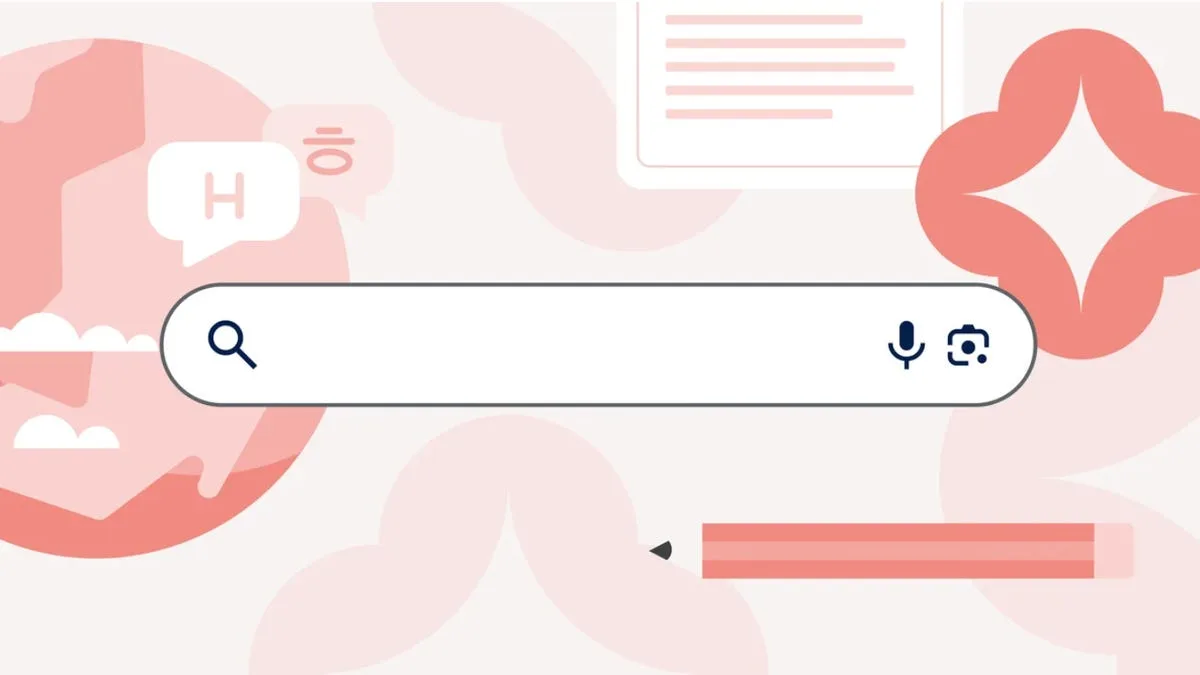As Albert Einstein once said, “The measure of intelligence is the ability to change.” This principle is at the heart of artificial intelligence, where adaptability and learning define success. AI agents are transforming industries by automating tasks, learning through RAG, and serving diverse roles across healthcare, finance, and customer service1.
From simple virtual assistants to advanced custom models, these systems have evolved to handle complex real-world applications. Emerging trends like drug discovery, fraud detection, and supply chain optimization showcase their expanded capabilities1. With 82% of firms planning to incorporate AI agents within the next three years, understanding their development is crucial1.
This guide provides a comprehensive step-by-step approach to creating and refining these systems. Each section dives into detailed examples and best practices, ensuring clarity and actionable insights. Whether you’re a beginner or an expert, this resource will help you navigate the process effectively.
Key Takeaways
- AI agents automate tasks and improve efficiency across industries.
- Training involves data labeling, algorithm selection, and continuous monitoring.
- Development can be done from scratch or using existing frameworks.
- Emerging trends include healthcare, finance, and customer service applications.
- Effective AI agents rely on quality data and robust design.
Understanding AI Agents and Their Impact

The rise of AI agents marks a significant shift in how businesses operate and innovate. These autonomous systems are designed to perceive, decide, and act independently, making them invaluable across various sectors. By leveraging advanced algorithms and large language models, they process data efficiently and improve over time2.
What Are AI Agents?
AI agents are software tools capable of performing tasks without human intervention. They range from simple reflex agents, which respond to immediate inputs, to advanced goal-based or utility-based agents that plan and optimize actions for long-term objectives. Their ability to learn from data and adapt to new environments sets them apart3.
For example, in customer service, AI agents handle queries 24/7, ensuring uninterrupted support. In healthcare, they assist in diagnostics, improving accuracy and efficiency. Financial markets benefit from their ability to detect fraud and analyze trends in real-time4.
Benefits Across Industries
The use of AI agents brings numerous advantages. In healthcare, they streamline operations, reducing errors and saving time. Financial institutions rely on them for fraud detection and risk management, enhancing security and compliance2.
Customer service sectors see improved interactions, with AI agents resolving queries faster and more accurately. By automating repetitive tasks, businesses can focus on strategic initiatives, boosting productivity and reducing costs3.
Understanding these benefits is crucial before diving into the training process. It ensures that the development aligns with specific goals and delivers measurable results. For more insights on AI applications in finance, explore AI in Finance.
How do I train my AI agent? A Comprehensive Guide

Building an AI agent demands a blend of technical expertise and strategic planning. The process begins with defining clear objectives and identifying the specific tasks the agent will perform. This ensures the system aligns with business goals and delivers measurable results5.
Overview of the Training Process
The training process involves several critical steps. Data collection is the foundation, where high-quality datum is gathered to ensure accurate learning. Proper labeling and preprocessing are essential to prepare the data for machine learning algorithms6.
Next, algorithm selection and design play a key role. Combining machine learning with natural language processing (NLP) enhances the agent’s ability to understand and respond to user inputs. Testing and refining the system ensure it performs effectively in real-world scenarios7.
Leveraging Custom Knowledge and RAG
Retrieval Augmented Generation (RAG) is a powerful technique to enhance AI learning. It allows the system to combine existing large language model knowledge with custom data. This approach improves decision-making and enables personalized outputs for customers5.
For instance, in customer service, RAG can help the agent provide tailored responses based on specific user queries. This not only improves user satisfaction but also reduces response times7.
By integrating RAG, businesses can create more intelligent and adaptable systems. This is particularly useful in industries like finance, where accurate and timely responses are critical6.
Defining Your Agent’s Purpose and Scope

Establishing a clear purpose is the cornerstone of any successful AI agent. Without a well-defined scope, efforts can become scattered, leading to inefficiencies and missed opportunities. This step ensures that the system aligns with business goals and delivers measurable results8.
Setting Clear Objectives
Start by outlining specific objectives for your custom agent. For example, 34% of businesses expect AI to boost customer experience, making this a common goal8. Clearly documented objectives provide direction and help measure success. Whether it’s enhancing operational efficiency or improving user interactions, clarity is key.
Phased implementation can also play a crucial role. Simple agents, like basic chatbots, take 1 to 3 months to build, while advanced systems may require 6 to 12 months or longer8. This approach ensures that goals are achievable within the given timeframe.
Identifying Key Functions and Use Cases
Next, identify the specific tasks your agent will perform. In customer service, AI agents handle queries 24/7, ensuring uninterrupted support9. In e-commerce, they provide personalized product recommendations and automate inventory management8. These use cases highlight the versatility of AI systems.
Aligning these functions with your business strategy ensures that the agent addresses real-world needs. For instance, AI agents in finance analyze transaction data to spot questionable patterns, enhancing security9. This step ensures that the agent’s capabilities are both relevant and impactful.
“The key to success lies in aligning the agent’s functions with overarching business goals.”
By defining purpose and scope early, you set the stage for focused and effective development. This foundational step ensures that your AI agent meets expectations and delivers tangible results.
Building and Assembling Your AI Development Team

A well-structured team is the backbone of any successful AI project. The right mix of expertise ensures that the system is both technically robust and user-friendly. From machine learning engineers to UX designers, each role plays a critical part in bringing the agent to life10.
Key Roles and Expertise Needed
Machine learning engineers are essential for designing and implementing algorithms. They focus on improving the system’s learning capabilities, ensuring it processes data effectively10. Data scientists, on the other hand, handle data collection, cleaning, and preprocessing, which are vital for accurate predictions11.
UX designers ensure the agent delivers a seamless user experience. Their work is crucial for creating intuitive interfaces that enhance interaction quality. Software engineers integrate these components, ensuring the system operates smoothly10.
In-House Versus Outsourcing Options
Building the team in-house allows for greater control and alignment with business goals. This approach is ideal for companies with the resources to hire and manage specialized talent11.
Outsourcing, however, can be a cost-effective alternative. Specialized firms bring expertise and tools that accelerate development. For example, outsourcing data labeling tasks can save time and improve accuracy10.
Both options have their merits. The choice depends on the project’s scope, budget, and timeline. A collaborative approach, whether in-house or outsourced, maximizes the chances of delivering a reliable and efficient AI agent11.
“The right team ensures that technical challenges are met while delivering a superior user experience.”
Gathering, Cleaning, and Preparing Data for Training

High-quality data is the foundation of any effective AI system. Without accurate and well-prepared information, even the most advanced algorithm can fail to deliver meaningful results. This stage ensures that the system learns from reliable sources, reducing complexity and improving performance12.
Sources of Quality Data
Data can come from various sources, including internal records, market research, and public datasets. Internal records provide insights into specific business operations, while public datasets offer broader perspectives. Combining these sources ensures a well-rounded dataset13.
For example, in customer service, historical interaction data helps the system understand user behavior. Public datasets, like those from Kaggle, add diversity and depth to the training process12.
Data Labeling and Preprocessing Techniques
Data labeling involves tagging information to make it understandable for the system. Accurate tagging improves performance, especially in tasks like sentiment analysis or image recognition13. Preprocessing includes cleaning data to remove inconsistencies, ensuring the algorithm works efficiently.
A dedicated team handles these tasks, ensuring the data is ready for training. Techniques like normalization and feature extraction further enhance the dataset’s quality12.
“Clean data is the backbone of a reliable AI system.”
By focusing on these steps, businesses can ensure their AI systems are trained on robust and reliable datasets, leading to better outcomes.
Selecting the Ideal AI Technologies and Tools

Selecting the right technologies is a critical step in AI development. The tools and frameworks chosen directly impact the system’s efficiency, scalability, and overall performance. This phase ensures that the agent’s role aligns with the organization’s goals, delivering measurable results14.
Evaluating Machine Learning Frameworks and NLP
The process begins with assessing machine learning frameworks like TensorFlow and PyTorch. These platforms provide robust libraries for building and training models, making them ideal for complex tasks. Natural language processing (NLP) tools, such as LangChain, enhance the system’s ability to understand and respond to user inputs15.
When selecting frameworks, consider their compatibility with your custom needs. For example, TensorFlow excels in large-scale projects, while PyTorch offers flexibility for research and experimentation. The choice depends on the agent’s defined action and the organization’s technical capabilities14.
Choosing Deployment and Integration Tools
Deployment tools like Microsoft Autogen streamline the process of integrating AI agents into existing systems. These tools ensure seamless communication between the agent and other applications, enhancing operational efficiency15.
Scalability is another critical factor. Tools that support cloud integration, such as AWS or Google Cloud, allow for easy expansion as business needs grow. This flexibility ensures that the agent remains effective in dynamic environments14.
“The right tools not only accelerate development but also ensure long-term adaptability.”
By carefully evaluating and selecting the appropriate technologies, businesses can build AI agents that meet their goals and deliver lasting value.
Designing and Developing Your Custom AI Agent
Designing a custom AI agent requires a strategic approach to ensure it meets both technical and user expectations. A well-thought-out design addresses architecture, user experience, and scalability, laying the foundation for a system that delivers consistent results16.
Agent Architecture and System Design
The architecture of an AI agent plays a critical role in its performance. Modular designs allow for flexibility, enabling components to be updated or replaced without disrupting the entire system. Concurrent designs, on the other hand, ensure the agent can handle multiple tasks simultaneously, improving efficiency17.
For example, Amazon Web Services (AWS) uses AI systems to predict computing power requirements, minimizing downtime during usage spikes16. This highlights the importance of choosing the right architecture based on specific needs. Scalability is another key factor, ensuring the system can grow alongside business demands17.
Integration and Coding Best Practices
Efficient coding practices are essential for real-time data handling and accurate responses. Techniques like the ReAct pattern, which operates in a cyclic loop of Thought, Action, Pause, Observation, and Answer, enhance the agent’s decision-making capabilities17.
Potential issues, such as API errors or network disruptions, must be addressed during development. Strategies like adding actions for weather information or news search can further enhance the agent’s functionality17. For hands-on guidance, consider enrolling in the How Do I Train My AI Agent? Step-by-Step Guide course to refine your skills.
“The right design choices during development have a lasting impact on the agent’s performance and maintenance.”
By focusing on architecture, coding practices, and potential challenges, businesses can create AI agents that are both robust and adaptable. This ensures the system remains effective in dynamic environments, delivering long-term value16.
Deploying, Monitoring, and Optimizing Your AI Agent
Deploying an AI agent effectively ensures it delivers consistent value in real-world applications. This phase involves transitioning from development to a live environment, where the agent must perform reliably and adapt to user needs. Proper deployment minimizes risks and maximizes efficiency, making it a critical step in the development process18.
Effective Deployment Strategies
Choosing the right deployment strategy is essential for a smooth transition. Gradual rollouts, such as blue-green deployments and canary releases, allow for testing in smaller environments before full-scale implementation. These methods reduce risks and ensure the agent performs as expected19.
For example, blue-green deployments involve running two identical environments. The “blue” environment hosts the current version, while the “green” environment tests the new version. Once verified, traffic is switched to the green environment, ensuring minimal downtime18.
Canary releases, on the other hand, gradually introduce the new version to a small user group. This approach helps identify issues early, ensuring a seamless rollout. Both strategies leverage expertise in system architecture and risk management19.
Ongoing Performance Monitoring and Updates
Continuous monitoring is crucial for maintaining an AI agent’s performance. Tracking key metrics like response times and error rates provides insights into system health. These metrics help identify bottlenecks and areas for improvement18.
Customer feedback also plays a vital role in optimization. By analyzing user interactions, businesses can refine the agent’s solution capabilities and enhance user satisfaction. Regular updates ensure the system remains aligned with evolving needs19.
For instance, integrating large language models with real-time monitoring tools allows for dynamic adjustments. This ensures the agent delivers accurate and timely responses, even in complex scenarios18.
“Effective monitoring and updates are the backbone of a reliable AI system, ensuring it evolves with user demands.”
By focusing on deployment strategies and continuous optimization, businesses can ensure their AI agents remain effective and relevant in dynamic environments. This approach maximizes long-term value and user satisfaction19.
Conclusion
Creating a custom AI system is a transformative journey that requires precision and strategy. From defining the agent’s purpose to deploying it effectively, each step plays a vital role in ensuring success. A systematic approach, combined with high-quality data and robust design, leads to a high-performing unit that delivers measurable results20.
Real-world benefits include increased efficiency, improved customer service, and enhanced decision-making capabilities. For instance, AI systems can analyze transaction patterns to detect fraud, significantly boosting security in financial services20. By automating routine tasks, businesses can focus on strategic initiatives, reducing costs and improving productivity21.
This guide serves as a valuable resource for businesses looking to implement AI solutions. Whether building from scratch or leveraging existing frameworks, the insights provided ensure a streamlined development process. Regular updates and monitoring further enhance the system’s performance, making it adaptable to dynamic environments21.
Take the next step in your AI journey by applying these best practices. With the right code, tools, and expertise, your company can unlock the full potential of AI, driving innovation and growth. Start today and transform your work processes for a smarter future.
FAQ
What are AI agents and how do they work?
What industries benefit most from AI agents?
What is the first step in training an AI agent?
How important is data preparation in AI agent training?
What tools are essential for developing an AI agent?
Should I build an in-house team or outsource AI agent development?
How do I ensure my AI agent performs well after deployment?
What role does custom knowledge play in AI agent training?
Can AI agents handle complex customer service tasks?
What are the key factors to consider when designing an AI agent?
Source Links
- A Step-by-Step Guide To Building An AI Agent From Scratch
- How to Build an AI Agent
- Understanding AI Agents: A Beginner’s Guide
- Step-by-Step Guide on Building AI Agents for Beginners
- A Comprehensive Guide to AI Agents: Step-by-Step Creation
- How to Build Agentic AI: A Comprehensive Guide 🧠
- Mastering AI Agent Development: A Comprehensive Guide for Modern Enterprises
- How to Build an AI Agent in 7 Steps
- How to Build an AI Agent for Smarter Automation & Decision-Making
- How to Build an AI Agent
- Building AI Agent Applications Series – Assembling your AI agent with the Semantic Kernel | Microsoft Community Hub
- How to Build AI Agents (2025) | WotNot
- AI Agent: A Complete Step-by-Step Guide To Build One In 2025
- How to Build an AI Agent: 7 Main Steps | Uptech
- How to Build an AI Agent: A Step-by-Step Guide
- How to Build an AI Agent for Better Automation | ClickUp
- How to Build an AI Agent from Scratch or Building an AI Agent from Scratch
- What Is An AI Agent Builder? The 7 Best Solutions in 2025
- AI Agent Deployment: Overcoming Technical Challenges
- How to build an AI agent: The 8 key steps
- No title found







